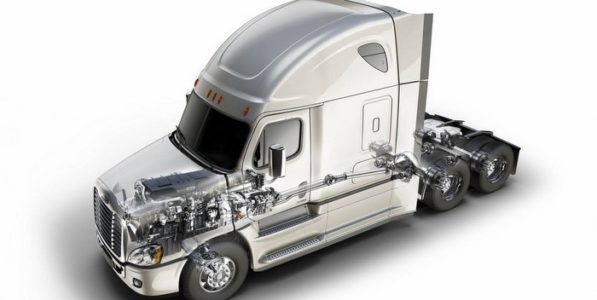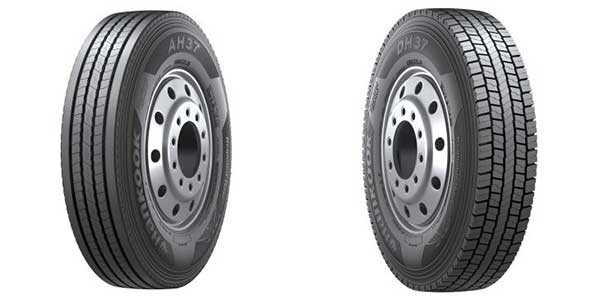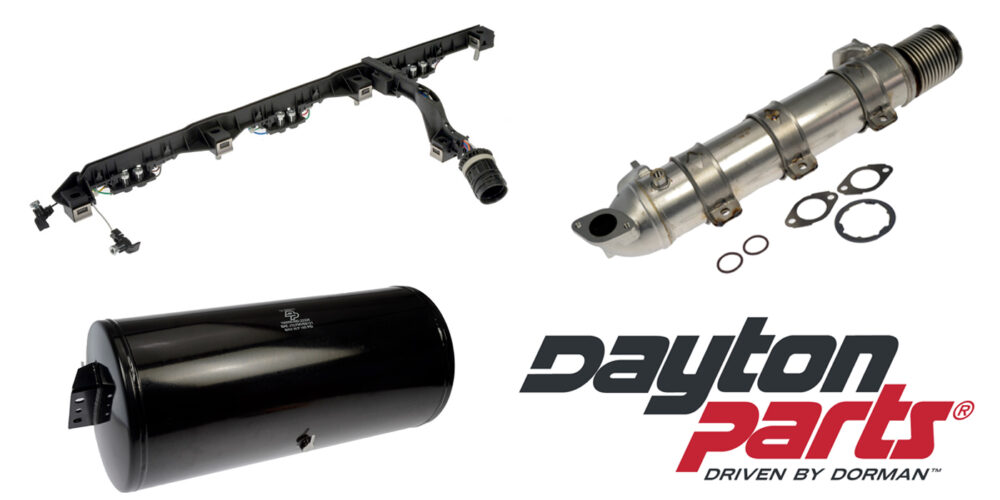While adoption of 6×2 axle configurations in over-the-road applications has lagged behind industry expectations—largely because of unexpected challenges and consequences in making the switch to 6×2 configurations, as well as lower-than-expected fuel prices making such a switch less of a money saver—there is still significant interest among fleets in making such a switch. And those that do spec 6×2 axles need to be aware that this will change their tire needs.
“Many fleets that have looked into 6×2 configurations may have discovered that this setup is hard on drive tires,” says Tom Clauer, manager of commercial and OTR product planning for Yokohama Tire Corp. “In this configuration, all of the torque delivered to the ground is directed through two or four tires versus the more traditional four or eight tires of the 6×4. This additional torque puts tremendous stress on the tires that have to deliver that torque. The tread takes the majority of the abuse, which manifests itself in rapid wear, heel and toe wear and/or reduced run-out mileage.
“Major manufacturers have produced drive tires specific to 6×2 configurations for many years,” he adds. “These tires have been engineered to handle the additional torque, such as Yokohama’s TY527. The challenge before us all now is to address these needs with ultra-wide base products.”
“If the truck will be operating mainly on well-maintained, paved roads with moderate grades, 6×2 is likely your best bet,” advises Anita McGinnis, commercial regional director with Hankook Tire America Corp. “Fewer drive axles produce less rolling resistance, improving fuel efficiency. The 6×2 also offers reduced weight for drivers looking to haul heavier payloads and is ideal for consistent line-haul operation with few slippery or icy road conditions. For this configuration, you will want to look for a smoother tread design to allow for less rolling resistance and increased overall fuel economy. There are manufacturers that produce reduced rolling resistance tires that meet EPA’s SmartWay program requirements.”
“However,” she continues, “the 6×4 is preferred if you expect to regularly operate off-highway or in bad weather where traction is really put to the test. The 6×4 configuration is ideal for those who need to deliver power to more tires, producing better control and overall vehicle operation. In this case, you would choose a tire with aggressive traction and enhanced durability for severe conditions.”
Fleets thinking of moving to a 6×2 configuration will need to know which types of tires belong in each position. Donna Murphy, business segment manager for Michelin Americas Truck Tires, provides a walkthrough. “On the free-rolling, non-driven axle, a fleet should generally utilize an all-position tire,” Murphy recommends. “With a free-rolling axle, a lower tread depth tread design will help in preventing the potential onset of irregular wear that could occur on a deeper tread depth drive tire. It will also help contribute further to lower rolling resistance with a lower tread depth. A drive tire is typically designed to handle the tractive forces from the torque being applied. Operating a drive tire on an axle that is free-rolling will have an extremely slow wear rate, higher rolling resistance and could develop irregular wear unless the tires receive enough scrub for even wear.
“On a 6×2, the wear rate can be expected to be higher on the driven axle than on a 6×4 application as all the work is being done through one axle,” she continues. “The free-rolling axle wear rate will be much slower and could potentially develop irregular wear if a deep tread depth drive tire is fitted, unless the application provides adequate scrub. If the same tread design is run on both rear axles, a regular rotation schedule will most likely need to be performed to maintain even tread depths between wheel positions.”
On the driven axle of a 6×2, fleets should operate a drive tire that can handle the tractive forces that will be transmitted through one axle as opposed to two in a 6×4 setup, Murphy says, noting that fleets should pay special attention to the tread designs, some of which may handle this torque better than others. If, meanwhile, the truck is configured with a liftable, non-driven axle, Murphy still recommends an all-position tire.














